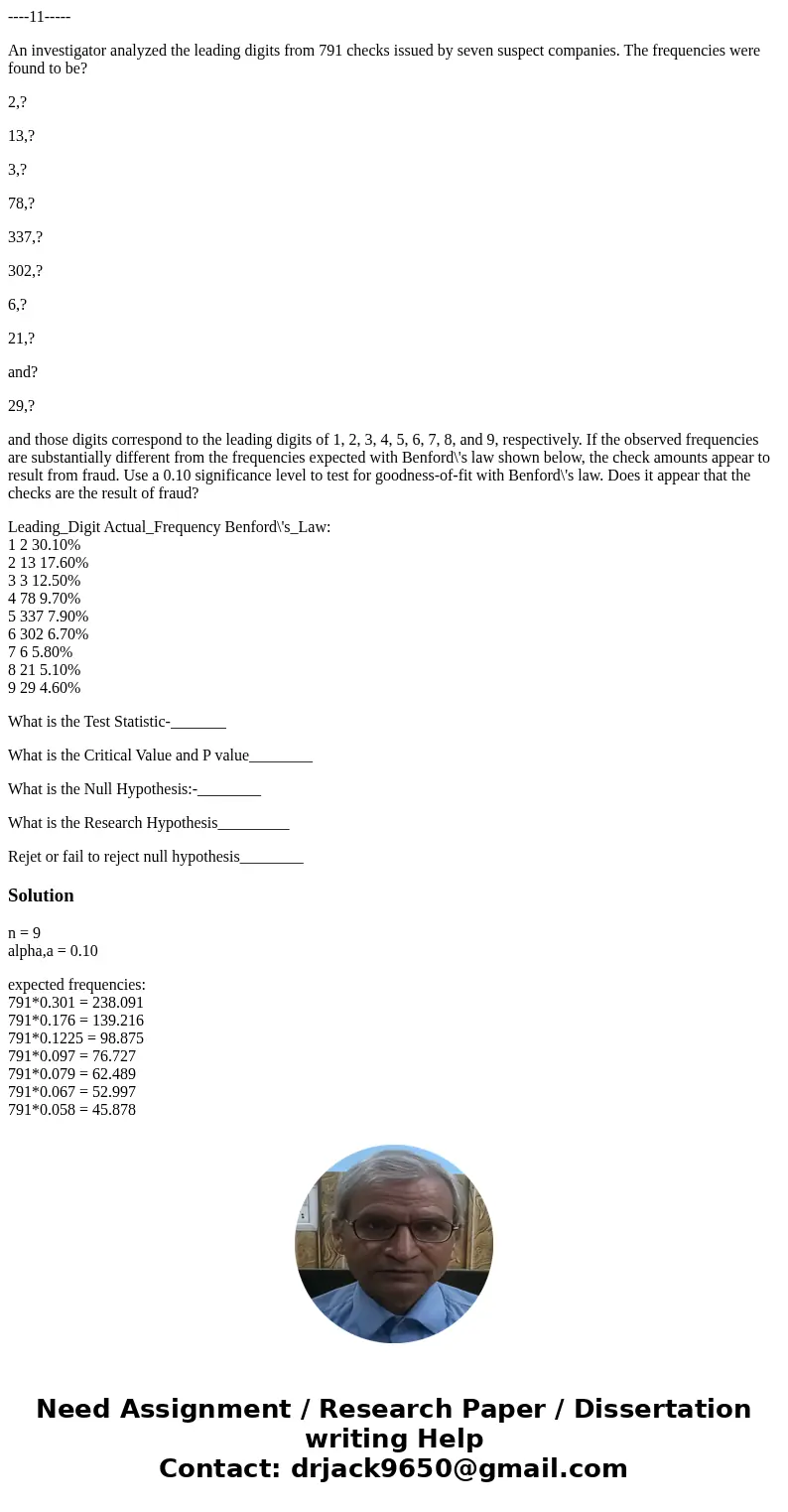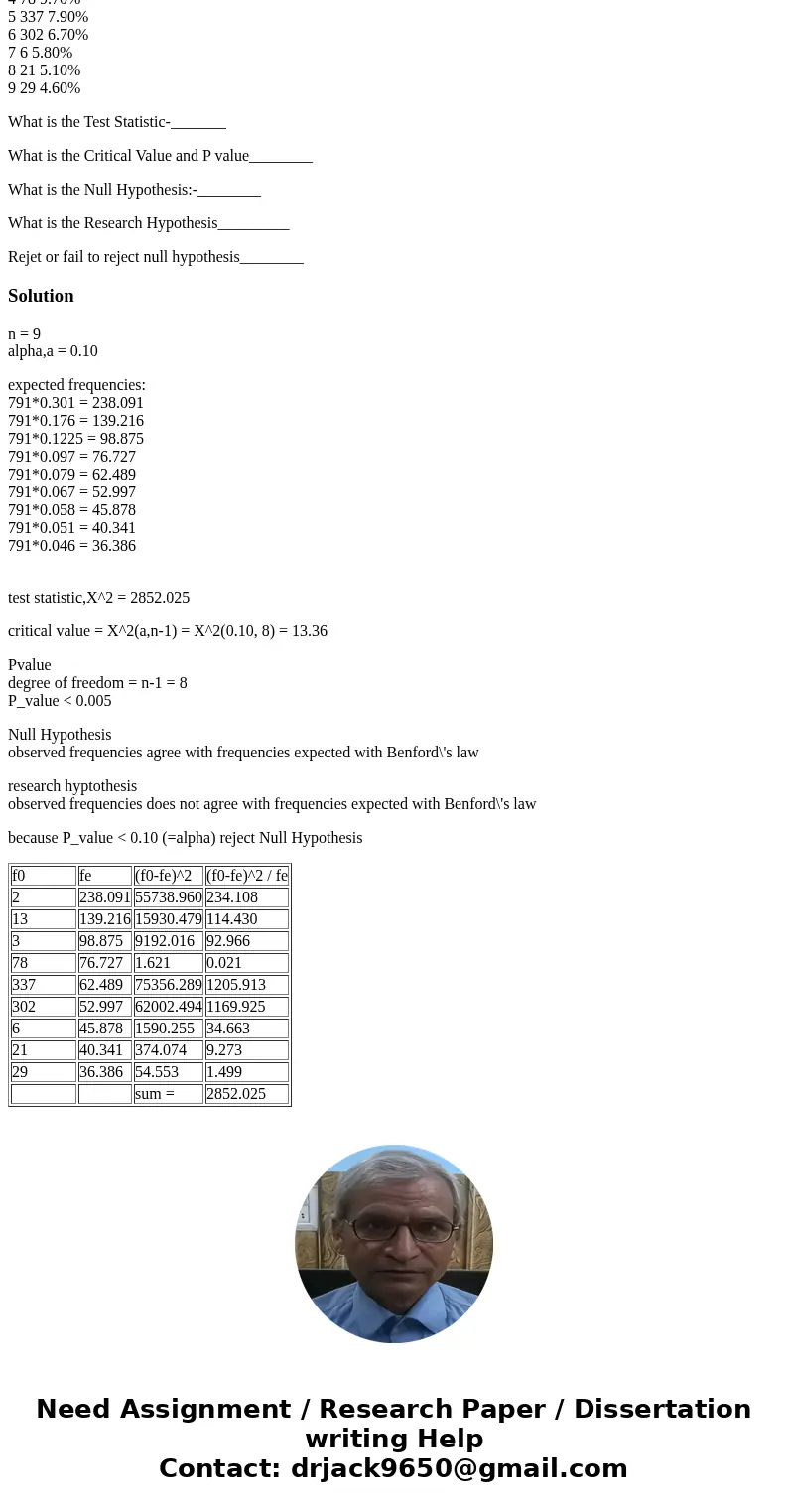11 An investigator analyzed the leading digits from 791 chec
----11-----
An investigator analyzed the leading digits from 791 checks issued by seven suspect companies. The frequencies were found to be?
2,?
13,?
3,?
78,?
337,?
302,?
6,?
21,?
and?
29,?
and those digits correspond to the leading digits of 1, 2, 3, 4, 5, 6, 7, 8, and 9, respectively. If the observed frequencies are substantially different from the frequencies expected with Benford\'s law shown below, the check amounts appear to result from fraud. Use a 0.10 significance level to test for goodness-of-fit with Benford\'s law. Does it appear that the checks are the result of fraud?
Leading_Digit Actual_Frequency Benford\'s_Law:
1 2 30.10%
2 13 17.60%
3 3 12.50%
4 78 9.70%
5 337 7.90%
6 302 6.70%
7 6 5.80%
8 21 5.10%
9 29 4.60%
What is the Test Statistic-_______
What is the Critical Value and P value________
What is the Null Hypothesis:-________
What is the Research Hypothesis_________
Rejet or fail to reject null hypothesis________
Solution
n = 9
alpha,a = 0.10
expected frequencies:
791*0.301 = 238.091
791*0.176 = 139.216
791*0.1225 = 98.875
791*0.097 = 76.727
791*0.079 = 62.489
791*0.067 = 52.997
791*0.058 = 45.878
791*0.051 = 40.341
791*0.046 = 36.386
test statistic,X^2 = 2852.025
critical value = X^2(a,n-1) = X^2(0.10, 8) = 13.36
Pvalue
degree of freedom = n-1 = 8
P_value < 0.005
Null Hypothesis
observed frequencies agree with frequencies expected with Benford\'s law
research hyptothesis
observed frequencies does not agree with frequencies expected with Benford\'s law
because P_value < 0.10 (=alpha) reject Null Hypothesis
| f0 | fe | (f0-fe)^2 | (f0-fe)^2 / fe |
| 2 | 238.091 | 55738.960 | 234.108 |
| 13 | 139.216 | 15930.479 | 114.430 |
| 3 | 98.875 | 9192.016 | 92.966 |
| 78 | 76.727 | 1.621 | 0.021 |
| 337 | 62.489 | 75356.289 | 1205.913 |
| 302 | 52.997 | 62002.494 | 1169.925 |
| 6 | 45.878 | 1590.255 | 34.663 |
| 21 | 40.341 | 374.074 | 9.273 |
| 29 | 36.386 | 54.553 | 1.499 |
| sum = | 2852.025 |


 Homework Sourse
Homework Sourse